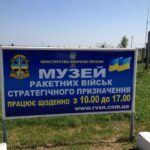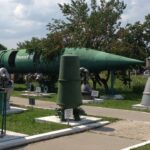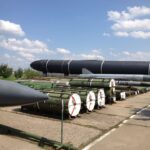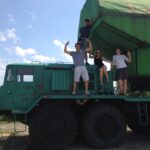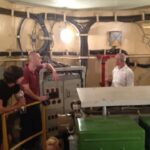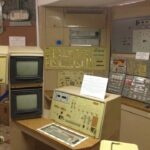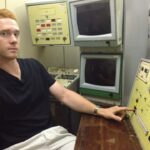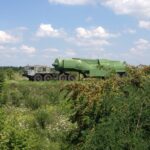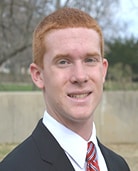Sitting peacefully amidst the sunflower fields and apricot trees of the central Ukrainian countryside, the Museum of the Strategic Rocket Forces near the town of Pervomaysk (Первомайск) once housed a deadly arsenal of nuclear weapons. During the Cold War, the site was the divisional headquarters for the 46th Rocket Division (Nizhniodniprovskaya Order of the October Revolution, Red Banner Division), one of many nuclear missile divisions located in Ukraine as part of the 43rd Rocket Army. Ukraine was actually home to so many Soviet nuclear missiles that, upon gaining its independence, the country became for a time the third-largest nuclear power in the world, after the United States and Russia. Almost all of the missile sites were dismantled shortly thereafter under the US-led Cooperative Threat Reduction initiative, with only the base at Pervomaysk left almost completely intact (with no warheads, of course) as a museum. Now, in a sleepy and almost idyllic location halfway between Kyiv and Odessa, visitors from around the world can have an incredible look inside what was once one of the most secretive and deadly locations in the USSR.

My trip to Pervomaysk was taken as part of a group trip organized by the NovaMova International Language School, which regularly rents travel buses and takes groups of Russian language students on the day-long excursion to the missile base. SRAS students should be sure to take advantage of this opportunity while studying in Kyiv, as the cost of the excursion (1025 hryvnias) is paid for by the program!
Due to the roughly four hour drive to the museum, the trip started early, and after loading ourselves onto buses around 7am, my fellow students and I spent the ride down getting to know each other better and practicing Russian. After driving past a seemingly endless sea of sunflowers, we finally turned off the highway and onto a narrow dirt road leading into the countryside, which brought us to the main gate of the museum at around 11am. A stout Ukrainian man dressed in camouflage fatigues greeted us and started our tour, explaining to us the history of nuclear rocket forces in Ukraine and the organization and layout of the base at Pervomaysk. The entire tour was in Russian, and though the guide started out speaking relatively slowly and trying to use more basic sentences, the complex subject matter and many military and scientific terms quickly made it rather challenging to follow. My intermediate level of Russian was good enough for me to understand about 60-70% of everything, including all the key points—such as that it would have taken 25 minutes for the SS-18 Satan missile to reach New York from Ukraine, and that to build and install each nuclear missile cost the USSR about $1mln.
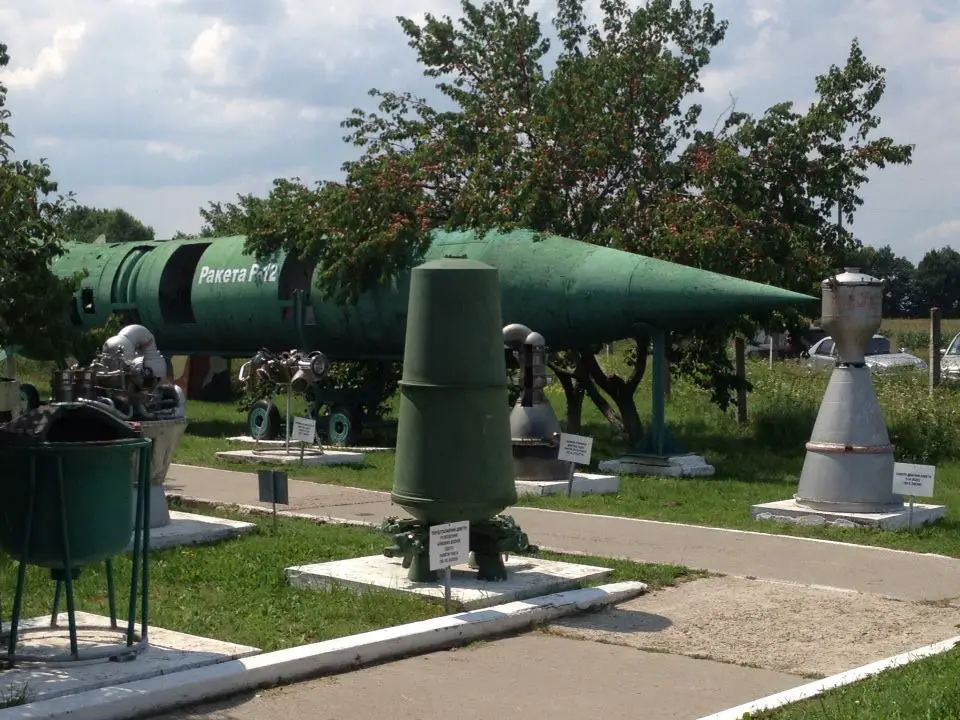
After making our way through the small main museum building, we headed out into the Ukrainian summer sunshine for the second part of our tour—the base itself. A different tour guide shepherded us past a long and imposing row of various missiles laid out on the tarmac, from “small” tactical nukes to the hulking black SS-18 Satan, cracking jokes about the various NATO code-names for the rockets as he pointed them out to us. After learning some details about the technical specifications of each rocket—including their weight and warhead capacity—we hiked between the multiple security lines of previously electrified barbed wire to inspect some of the transport and launching trucks used by mobile nuclear missile forces at other bases (Pervomaysk was a stationary nuclear missile site, which means all of the rockets were housed underground).

Then came the most intriguing and anticipated part of the tour—the trip below ground to the command and control bunker. Buried deep enough to withstand a nuclear strike from a US or NATO missile, the command or “central point” (центральный пункт) of the rocket base was home to a rotating team of officers, cramped together in a room that is essentially a wall-to-wall computer system. With an elevator, the launch keys, and a direct line from Moscow, Soviet rocket troops had everything they needed to quickly rain destruction on North America from underneath the rich soil of the Ukrainian steppe. As part of the show of the excursion, Moscow actually called during my “shift” in the command point, and I was able to press the launch button that, only a few decades ago, would have started a nuclear Armageddon.
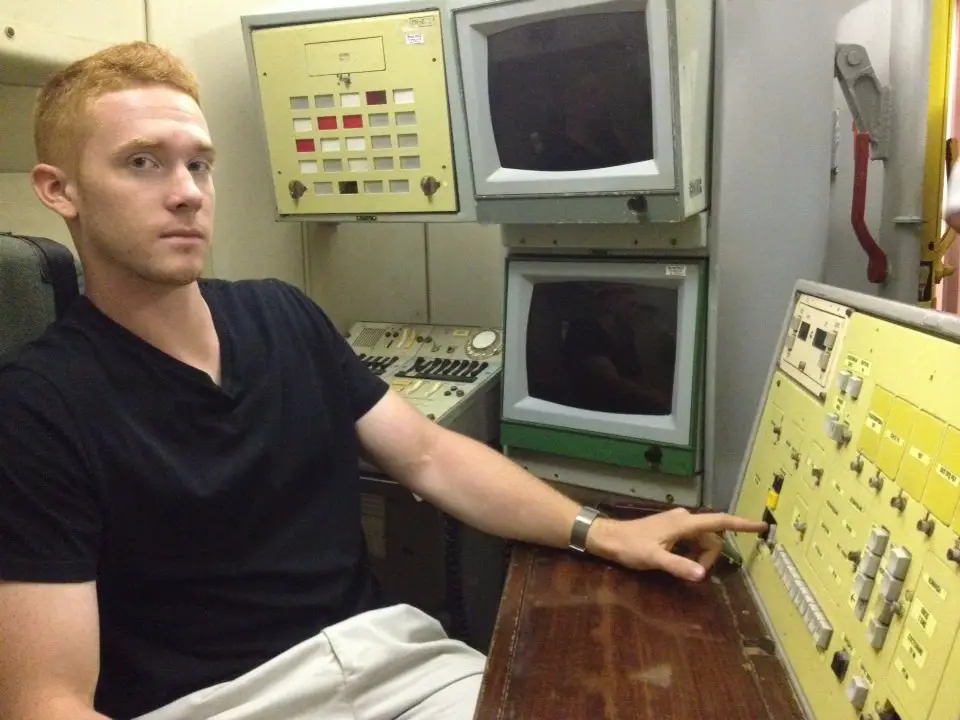
The experience was, overall, incredible—a very rare opportunity to see a real Soviet nuclear missile base almost completely intact, and to view some of the military hardware that was part of the world’s deadliest arms race, including an example of the SS-12 Scarab missile that played the central role in the Cuban Missile Crisis. But more fascinating than the over 2000 exhibits of the museum itself was simply the overall impression of the site: the peaceful Ukrainian countryside versus a deadly nuclear rocket base, with apricot trees and wildflowers growing next to rusting Soviet missile trucks. To ponder the sheer destructive power amassed by two opposed camps of (mostly) rational human beings, who somehow refrained from intentionally or accidentally using a single nuclear missile, was sobering. Also, it was interesting for me personally to view one of the nuclear sites disarmed through the Cooperative Threat Reduction (CTR) program, since Senator Richard Lugar, one of the initiative’s creators, hails from my home state of Indiana and is actually now a faculty member at Indiana University, where I study.
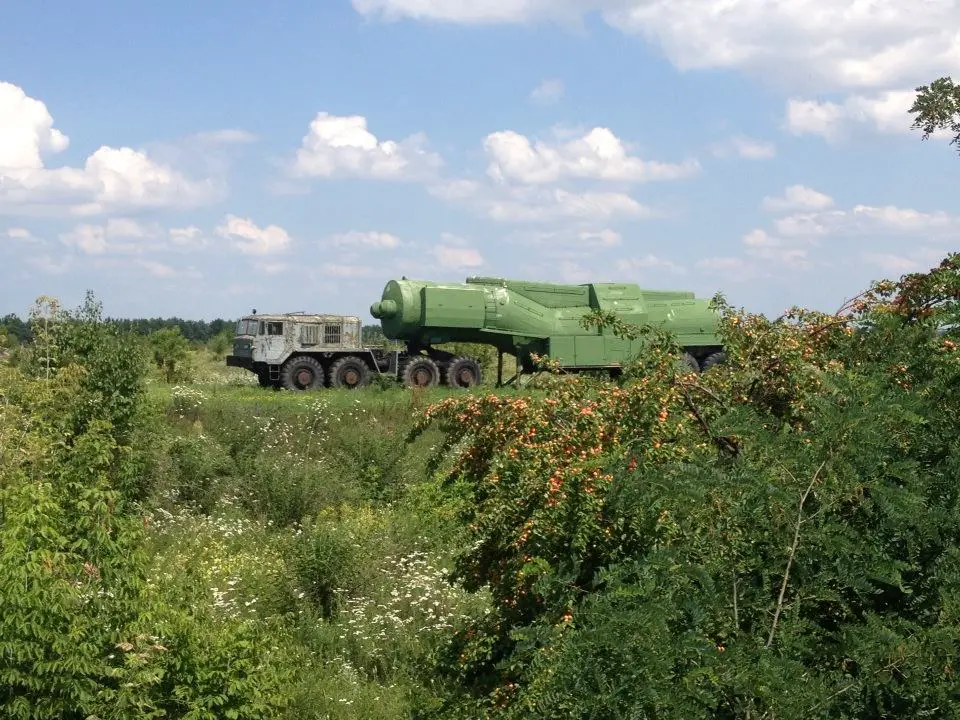
All in all, the trip to Pervomaysk gave me a lot to think about on the ride back – a process helped by our two stops, first to pick wild sunflowers, and then to eat lunch at a nice Armenian restaurant just off the highway in the middle of nowhere. Most of my group promptly fell asleep after lunch, waking up to a loud and gritty Russian TV series about the Chechen wars in the 1990s shown on the busses AV system. While trying to learn some more Russian from the film, I reflected on a fact that our guides at the base had repeatedly emphasized: though conflict has continued in the post-Soviet space since the collapse of the USSR, thankfully the Cold War ended without the use of nuclear weapons, allowing people who were “enemies” 20-odd years ago to meet and ponder the destructive capabilities of mankind in the sunny Ukrainian countryside.
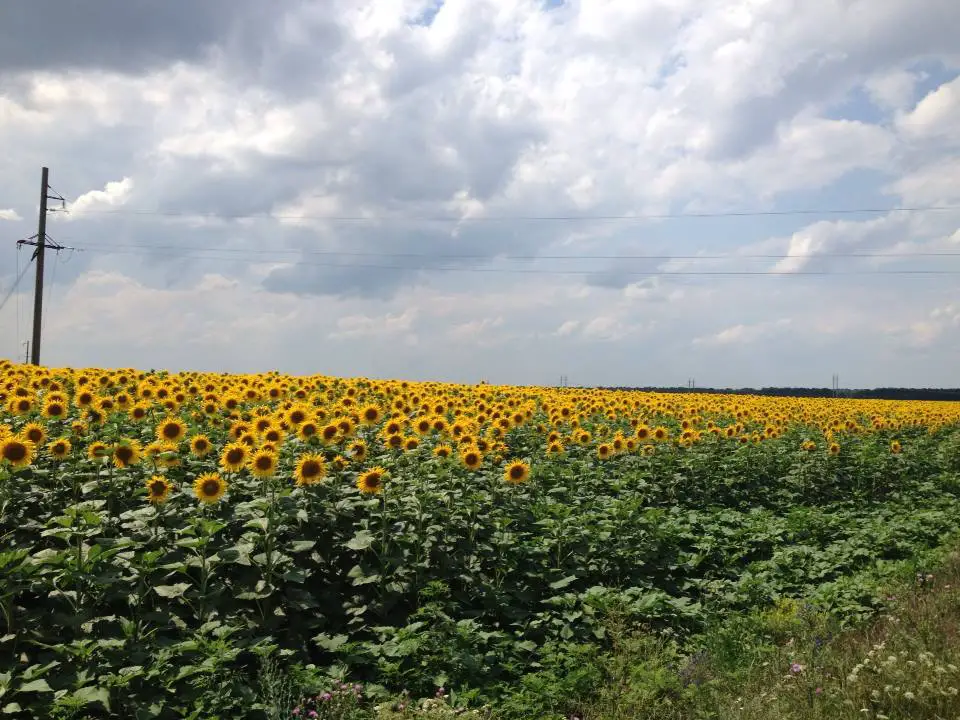
For group and faculty-led tours, Pervomaysk is perhaps the best place I have visited in Ukraine thus far. The base is much more interesting to see with a group, not least because it’s better to have some company during the drive to and from Kyiv—and, if your Russian language knowledge is still elementary, it’s also better to have more experienced Russian speakers along to help bridge the sometimes large language gap created by technical terms such as “Трехступенчатая тведотопливная межконтинентальная баллистическая (МБР) среднего класса,” which simply means a three-stage Intercontinental Ballistic Missile of the middle class.
Museum of the Strategic Rocket Forces/
Музей Ракетных Войск
Стратегического Назначения
10:00 to 17:00 daily
1025 hryvnias for full excursion through NovaMova
(included in SRAS programs)
www.rvsn.com.ua


